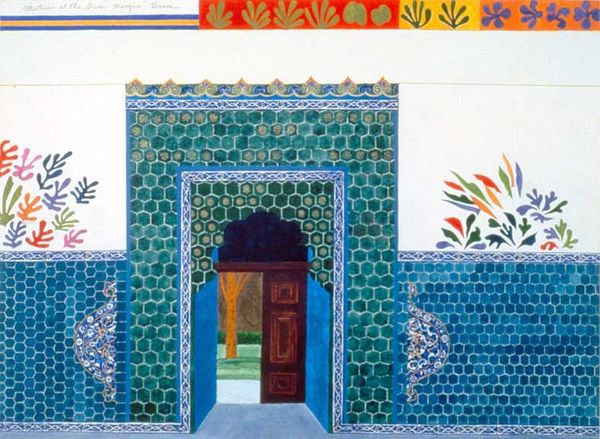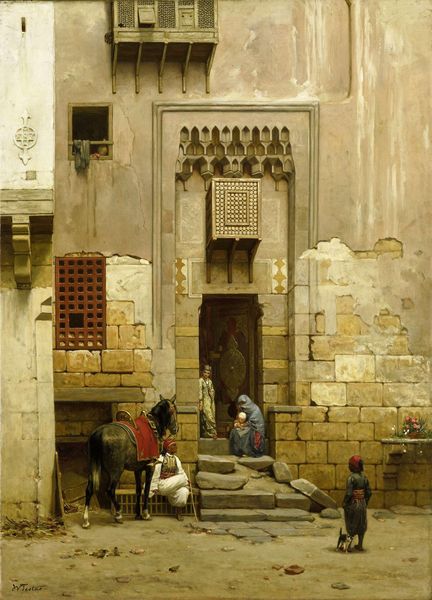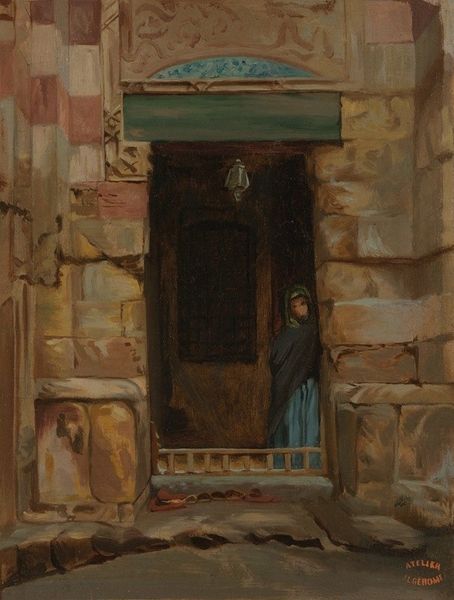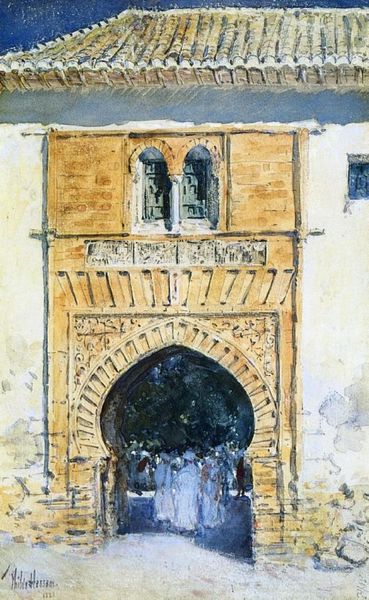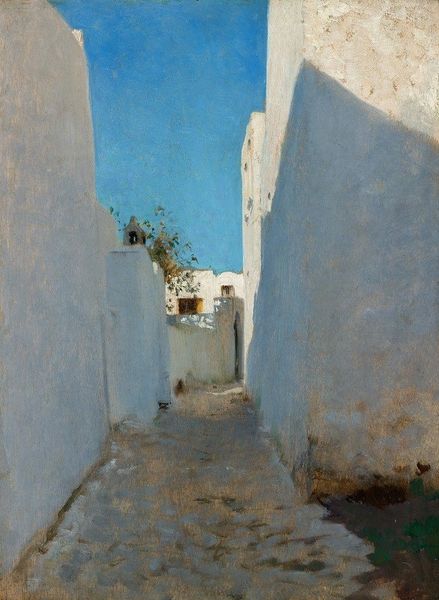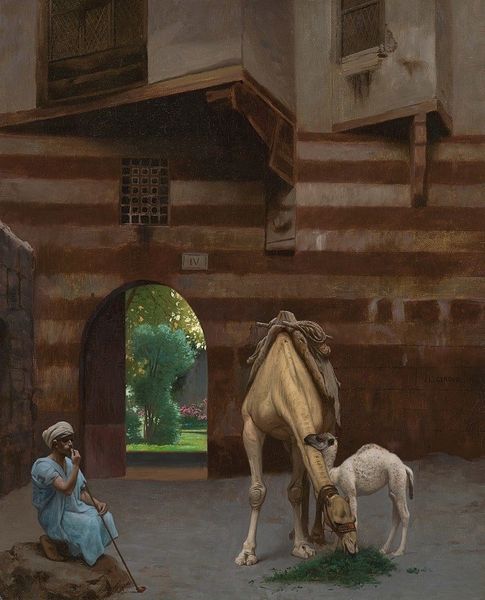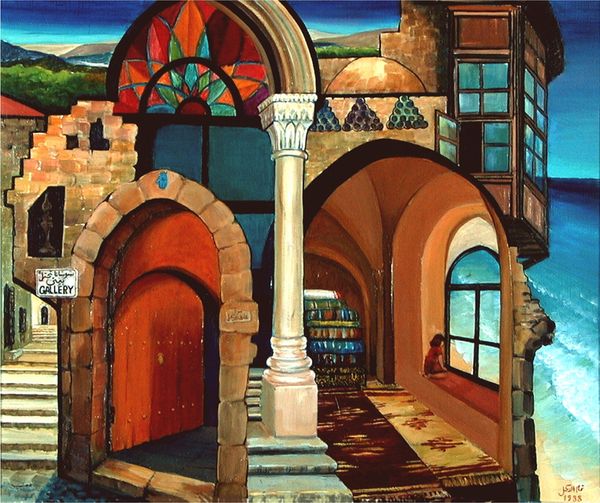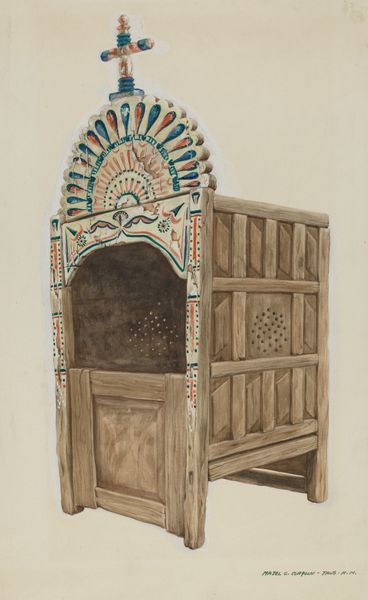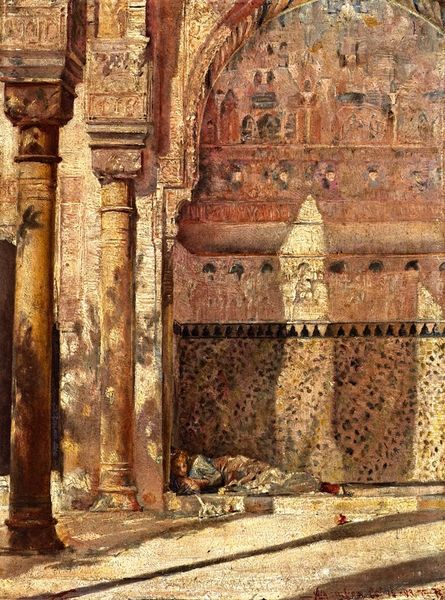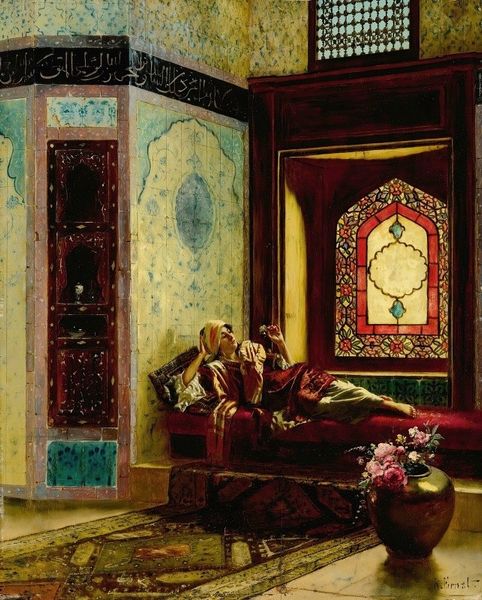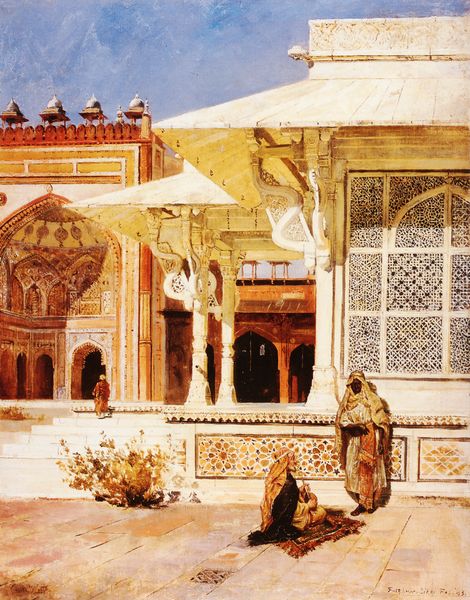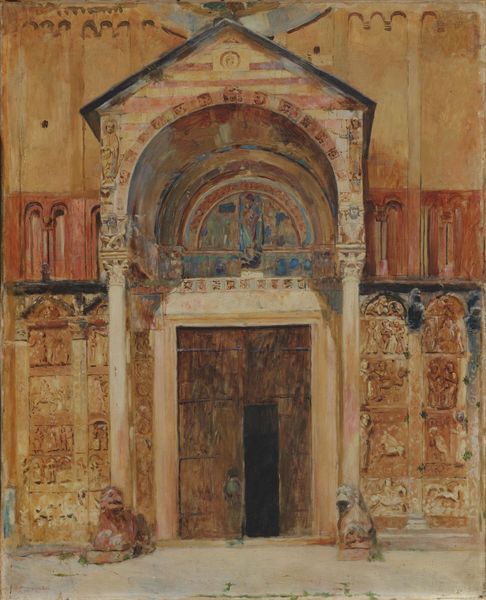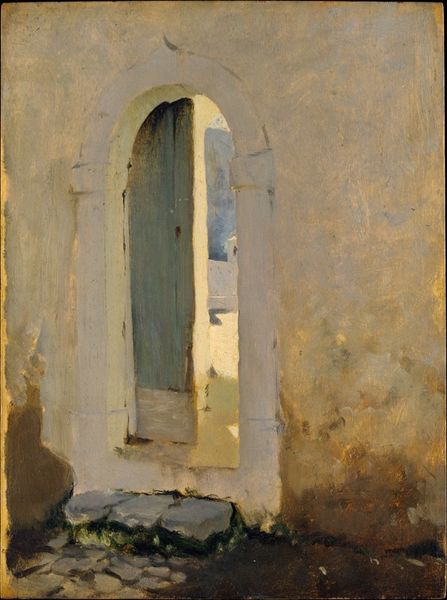
painting, oil-paint
#
painting
#
oil-paint
#
landscape
#
oil painting
#
geometric
#
orientalism
#
cityscape
#
islamic-art
#
realism
Copyright: Abdul Qader Al Raes,Fair Use
Curator: This evocative piece, "Yesteryear," by Abdul Qader Al Raes, is rendered with oil paint, capturing a doorway into what seems a traditional Middle Eastern courtyard. It’s a beautifully composed painting, but the year is, alas, unknown. Editor: It definitely feels like a specific place. The light! I'm struck by the weight of the wood of the door, those heavy rivets. It's a very tactile piece; you can almost feel the texture of the aged wood and plaster. Curator: Absolutely. And beyond that immediate sensation, the door serves as a powerful symbol, doesn't it? Thresholds in art and architecture often represent transition, memory, perhaps even access to the past that the title implies. Consider those geometric patterns along the jamb; these echo traditional Islamic art, embodying centuries of design and craft knowledge passed down. Editor: Craft knowledge, precisely! Who built that door? Where did the wood come from? What tools were used? And the act of representation through painting... oil paint wasn't traditionally available there; what does its use mean to the social history of the location? I am certain there's more here than nostalgic Orientalism. Curator: I see what you mean. Al Raes perhaps layers that established visual language of Orientalism, yet injects it with something profoundly personal and authentic from lived experience in the Gulf region. The doorway itself frames an interior space with cool, filtered light – hinting at private domestic life but subtly avoiding direct depiction. It becomes a universally inviting glimpse backward. Editor: Yes, that dance of accessibility and inaccessibility intrigues me. It’s about consumption of space, not just aesthetics; access and labour and trade all become folded into it. Curator: A fitting point. Considering the materials used and depicted—the imported paint and the weighty indigenous wood—certainly grounds us in its specific moment and locale. This piece speaks volumes about what has remained and what has altered through the shifting currents of cultural exchange. Editor: Exactly. “Yesteryear” makes us ponder not only history, but how we build, acquire and make history physically available to us.
Comments
No comments
Be the first to comment and join the conversation on the ultimate creative platform.
